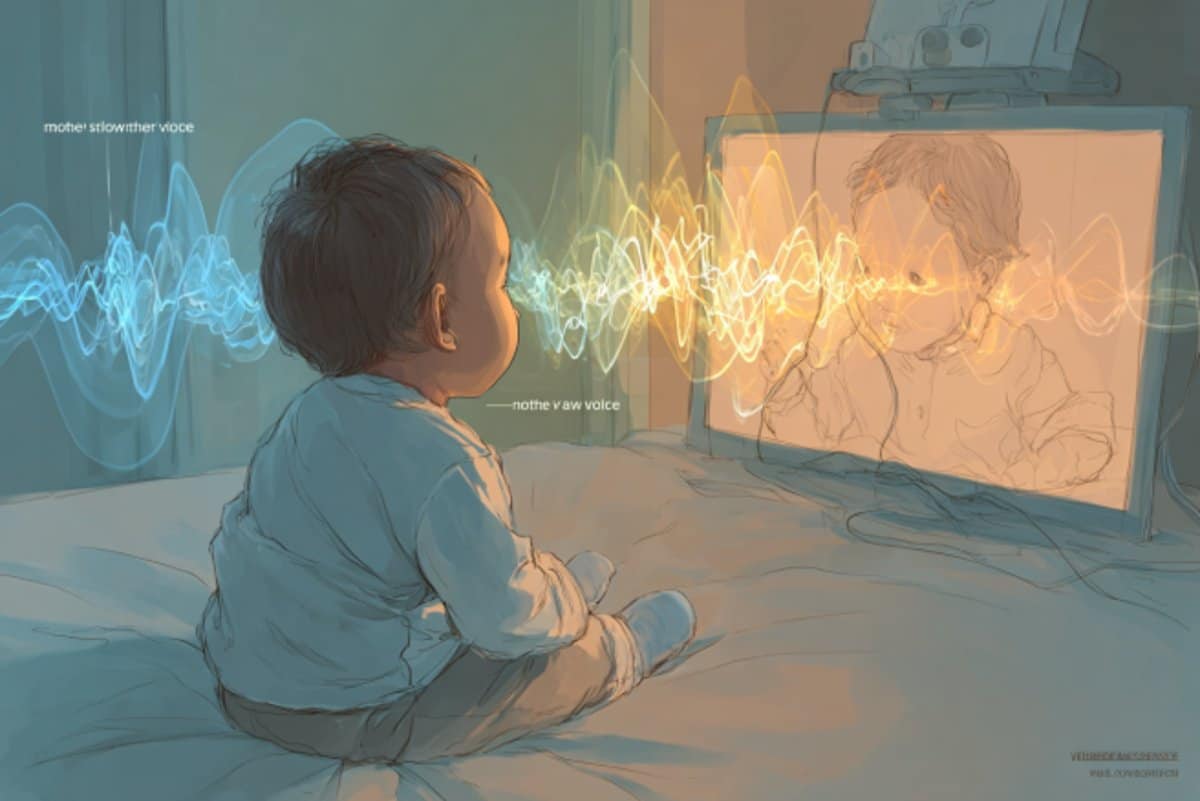Summary: New findings show that seven-month-old infants are finely tuned to their mothers’ voices, displaying stronger neural tracking than when hearing strangers. When a stranger’s voice accompanied an unfamiliar face, babies’ brains showed enhanced processing of that face, suggesting maternal speech shifts how infants allocate attention.
Facial emotion did not change these outcomes, indicating the effect is linked to voice familiarity rather than emotional cues. The results highlight how deeply maternal signals shape early social perception and raise questions about how multiple senses combine to guide infant development.
Key Facts
- Maternal Voice Sensitivity: Infants show significantly stronger neural tracking for their mothers’ voices than for strangers’ voices.
- Voice–Face Interaction: Babies process unfamiliar faces more robustly when paired with an unfamiliar rather than maternal voice.
- Emotion-Independent Effect: The pattern persists regardless of whether faces appear happy or fearful.
Source: SfN
In a new Journal of Neuroscience paper, Sarah Jessen and colleagues, from the University of Lübeck, explored how infants track their mothers’ voices compared to unfamiliar voices.
The researchers also explored whether this vocal processing affects how babies process new faces.

Brain recordings of babies around 7 months old showed that they were far more attuned to the voices of their mothers than strangers. Additionally, neural tracking of unfamiliar faces was stronger when babies heard a stranger’s voice compared to their mother’s voice at the same time.
Whether a face was happy or fearful did not affect these observations.
According to the researchers, these findings suggest that babies are quick to recognize their mothers’ voices. Furthermore, maternal speech may influence social processing in babies as they look at unfamiliar faces.
Speaking on future experimental plans, says Jessen, “It’d be interesting to see how other sensory modalities like a mother’s smell or touch influence social processing in infants. How are babies combining sensory modalities to understand their social environment?”
Key Questions Answered:
A: Babies showed much stronger neural sensitivity to their mothers’ voices than to strangers’ voices.
A: Babies tracked unfamiliar faces more strongly when the accompanying voice was a stranger’s rather than their mother’s.
A: Maternal voices strongly shape how infants engage with new social information.
About this neurodevelopment research news
Author: SfN Media
Source: SfN
Contact: SfN Media – SfN
Image: The image is credited to Neuroscience News
Original Research: Closed access.
“Neural Tracking of the Maternal Voice in the Infant Brain” by Sarah Jessen et al. Journal of Neuroscience
Abstract
Neural Tracking of the Maternal Voice in the Infant Brain
Infants preferentially process familiar social signals, but the neural mechanisms underlying continuous processing of maternal speech remain unclear.
Using EEG-based neural encoding models based on temporal response functions, we investigated how 7-month-old human infants track maternal vs. unfamiliar speech and whether this affects simultaneous face processing.
Infants (13 boys, 12 girls) showed stronger neural tracking of their mother’s voice, independent of acoustic properties, suggesting an early neural signature of voice familiarity.
Furthermore, central encoding of unfamiliar faces was diminished when infant’s heard their mother’s voice and face-tracking accuracy at central electrodes increased with earlier occipital face tracking, suggesting heightened attentional engagement.
However, we found no evidence for differential processing of happy vs. fearful faces, contrasting previous findings on early emotion discrimination.
Our results reveal interactive effects of voice familiarity on multimodal processing in infancy: while maternal speech enhances neural tracking, it may also alter how other social cues, such as faces, are processed.
The findings suggest that early auditory experiences shape how infants allocate cognitive resources to social stimuli, emphasizing the need to consider cross-modal influences in early development.






